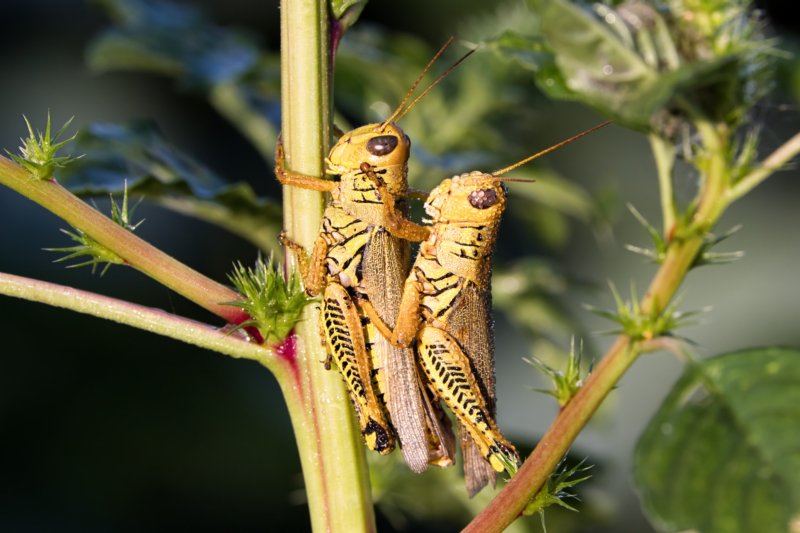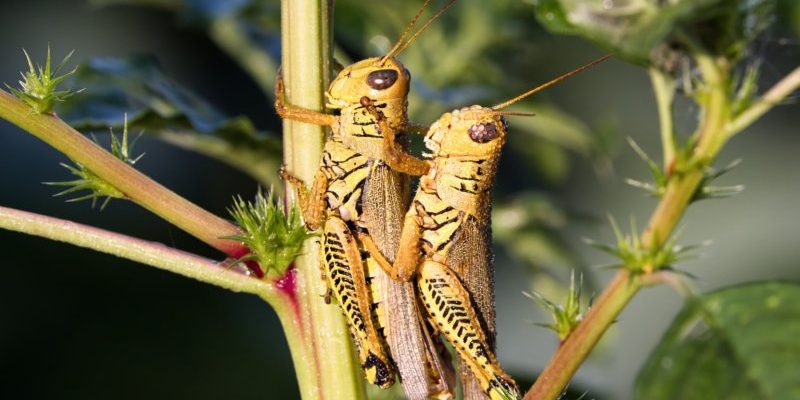
Grasshoppers communicate primarily through sounds and movements. Their environments are filled with vibrations, and these little guys have learned to use them to convey feelings, attract mates, and warn of danger. From the chirping of their legs rubbing together to the subtle changes in their body language, grasshopper communication is a rich tapestry of signals that can teach us a lot about the natural world.
Let’s dive deeper into the different *ways grasshoppers communicate and interact*. We’ll explore their sounds, body language, and even their social structures. By the end, you’ll have a clearer picture of how these fascinating creatures connect with each other.
The Sounds of Grasshoppers
Grasshoppers are like nature’s musicians, and their music is a key part of how they communicate. When they rub their hind legs against their wings or the body of another grasshopper, they create distinctive sounds called *stridulations*. It’s almost like a musical performance that can convey different messages depending on the rhythm and intensity.
You might be wondering why they make these sounds in the first place. The primary purpose is often mating. Male grasshoppers call out to attract females. Each species has its unique song, much like singers have different styles. Some might prefer a soft, gentle tune while others produce loud and boisterous calls. This way, females can choose a mate based on the quality of their song.
But communication isn’t just about attracting partners; it can also serve as a warning. If a grasshopper feels threatened, it may produce a different sound to alert others nearby. This is especially important in the wild where predators lurk, ready to pounce.
Body Language: More Than Just Sound
While sounds play a crucial role, grasshoppers also have a silent language that speaks volumes. Their body posture and movements can send powerful signals to other grasshoppers. For instance, a grasshopper may change its stance or gesture with its antennae to indicate aggression or submission.
Think about it this way: when you meet someone, your body language can say a lot. A friendly wave or an assertive stance can change the entire interaction. Grasshoppers do something similar. For instance, a grasshopper that’s puffed up and stands tall might be trying to assert dominance, while one that crouches low may be trying to blend into the environment to avoid being spotted.
These body signals aren’t just about personal interactions; they also play a role in maintaining social hierarchies. In groups, you’ll often see dominant grasshoppers asserting their place through certain movements, which helps keep peace and order within their community.
The Role of Antennae in Communication
Antennae aren’t just for decoration; they are crucial tools for grasshoppers’ communication. These long, flexible appendages help them sense their environment and others nearby. Think of them as a sort of radar system that picks up vibrations, smells, and even sounds.
When grasshoppers meet or spend time together, they often engage in a process called *tactile communication*. They might touch each other with their antennae, which allows them to gather information about age, sex, and even health. This touch can convey reassurance or camaraderie, helping to strengthen social bonds within their groups.
You can imagine these interactions like a social gathering where everyone is checking in with each other. The grasshoppers use their antennae to “ask” questions and gain information, which can be critical in deciding how to interact or form connections.
Grasshopper Social Structures
Grasshoppers aren’t just solitary creatures; they can form intricate social structures. Their groups may consist of families or larger communities where communication plays a vital role in maintaining order and cooperation.
In these groups, different grasshoppers often have specific roles. Some may act as sentries, keeping an eye out for predators, while others focus on foraging for food. Their ability to communicate effectively helps everyone understand their roles and responsibilities.
For example, if one grasshopper spots a predator, it might emit a specific sound or use its body language to warn others. The rest of the group quickly responds, ensuring that everyone can escape danger. This teamwork is a testament to how grasshoppers rely on communication to thrive in their environment.
Visual Signals: Color and Movement
While sounds and body language are crucial, grasshoppers also use visual signals to communicate. Their body color and movement can convey a lot of information. For instance, bright colors may signal that a grasshopper is healthy and vibrant, which can attract partners and deter predators.
When in a group, grasshoppers might display certain movements—like hopping or changing positions—to express excitement or readiness to mate. This form of communication is immediate and visually striking, allowing them to convey messages without needing sound.
These visual cues are especially important in environments where sound might not travel well, like dense foliage. Here, grasshoppers rely on their bright colors and energetic movements to connect with others.
Why Understanding Grasshopper Communication Matters
Understanding how grasshoppers communicate is not just a fun tidbit about nature; it has broader implications too. By studying their interactions, scientists can learn about ecosystem health and biodiversity. Grasshopper populations can reflect changes in the environment, so observing their behavior can signal larger ecological shifts.
Moreover, exploring their communication patterns might inspire new methods in technology or robotics. Just as grasshoppers have developed efficient ways to convey messages within their communities, researchers are always looking for innovative ways to enhance communication in artificial systems.
In a world where preserving nature is becoming increasingly important, the insights gained from studying these creatures can lead to meaningful conservation efforts.
Final Thoughts on Grasshopper Communication
Grasshoppers are remarkable creatures with a rich tapestry of communication methods that range from sounds to body language. Their ability to connect with one another not only serves their reproduction and survival but also reflects the complexities of nature. Understanding these interactions enhances our appreciation of the natural world and sheds light on the importance of preserving these ecosystems.
Next time you hear the chirping of grasshoppers in the grass or see them jumping around, take a moment to think about what they might be communicating. Their world is filled with stories that are just waiting to be discovered. Let’s celebrate these tiny yet mighty creatures and their fascinating ways of interacting!

